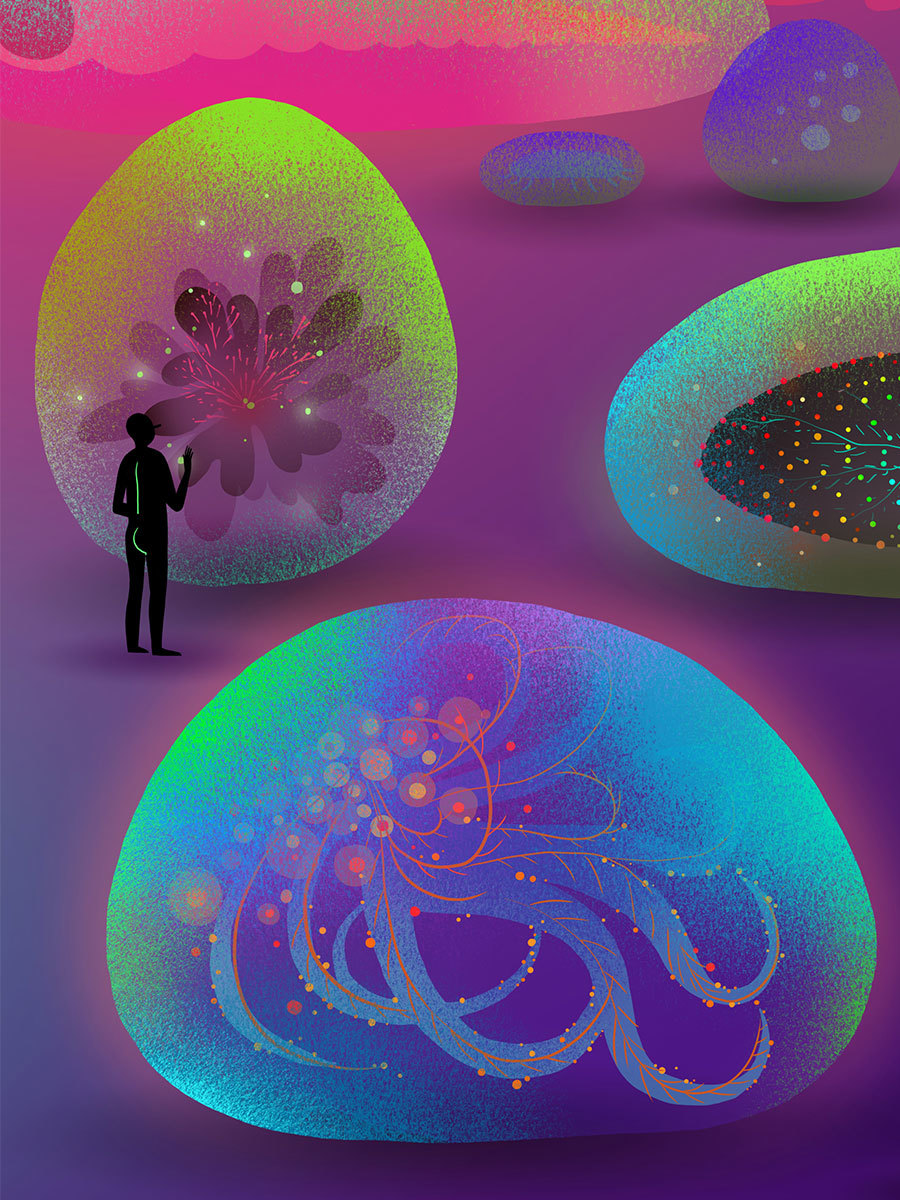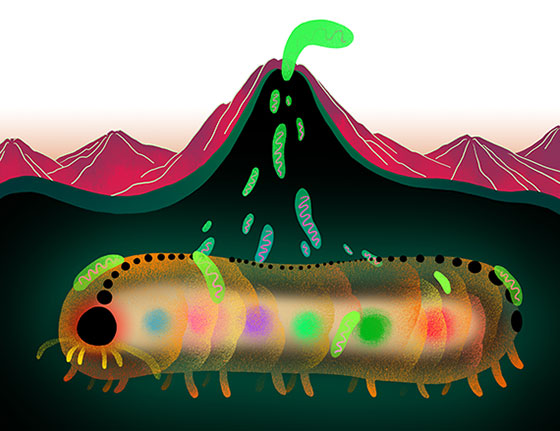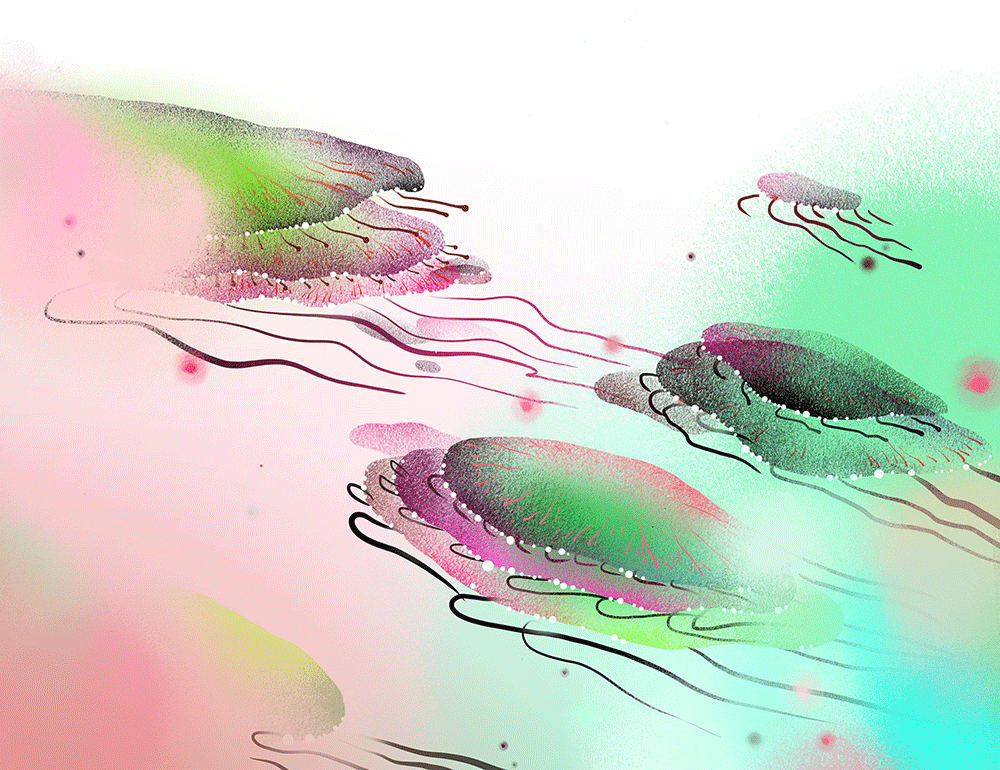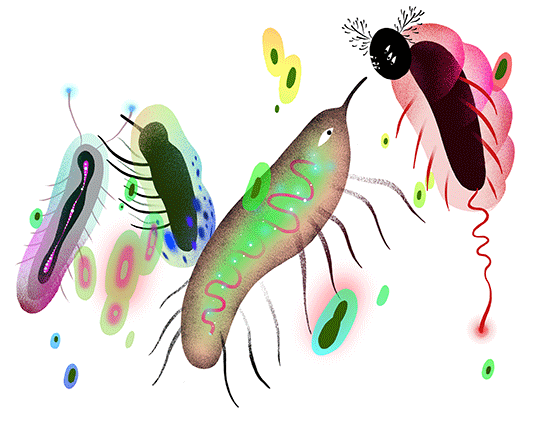Eight best places to search for life in the solar system

Life could be based on silicon instead of carbon, or ammonia instead of water. She could create an information system different from DNA and RNA. It could even evolve according to principles different from Darwinian evolution. But one quality must be inherent in life anywhere: thermodynamic instability. Without this, nothing is “alive” in our understanding. In fact, life is a system developed by nature for energy dissipation - in order to do something with the energy of the planet, be it sunlight falling on the surface, or chemical reactions in rocks, seas or air.
In scientists searching for life elsewhere in the solar system, such a thought inspires hope. Most places in the solar system are thermodynamically unstable. By adding liquid solvent and complex chemistry, you will create the conditions for life. Traveling around the solar system, we find a variety of environments in which one can imagine the existence of living organisms. If we don’t find life originating in our solar system anywhere other than Earth, it will be more strange than if we find it.

')
Mars
Today, the Red Planet is a frozen desert with such a thin atmosphere that water ice evaporates when heated, and it cannot protect the surface from intense solar and cosmic radiation. In early history, Mars could be more comfortable, there could be thicker air, acceptable temperatures and flowing water. Scientists believe that in these earlier years, life could have arisen on Mars. In this case, it can be stored underground. “There is still liquid water deep in the cortex, so maybe there is a primitive life that feeds on hydrogen,” says Jonathan Lunine, director of the Center for Astrophysics and Planetology at Cornell University. The existence of these organisms would explain the methane observed in the atmosphere of Mars.
Asteroids
The largest asteroids are so large that they are classified as dwarf planets. During formation, they heat up, as a result of which geographic layers are divided into core, mantle and outer layer. Internal heating melts the ice to liquid water that interacts with minerals such as olivine and pyroxene, resulting in additional heat. In fact, the outgoing heat can heat up the inside too much and it will become too hot for life and its previous forms, at least temporarily, although interesting chemical reactions can still occur closer to the surface. “On the surface of Ceres there are minerals phyllosilicates [layered silicates - approx. trans.], modified by liquid water, and it's very cool, says Lyunin. “Is there still liquid water inside it, we do not know.” Ceres is currently studying the Dawn spacecraft.

Venus
The average temperature on the surface of Venus is 460 ºC, and the atmospheric pressure of 90 exceeds the pressure at the surface of the Earth. But perhaps this planet was not always so cruel. “Her early history is unknown to us,” says Penelope Boston, director of the NASA Astrobiological Institute. “Was it previously inhabited?” And the present existence of life on it cannot be completely ruled out. Scientists have investigated the possibility of life in the clouds of Venus. “A huge amount of ultraviolet light comes in, so every kind of photochemistry takes place there,” says Caleb Scharf, director of astrobiology at Columbia University. “Even photosynthesis is not needed; you can simply consume what forms in the atmosphere. " In 2006, the NASA research team concluded that although it was impossible to completely exclude the possibility of life in the clouds of Venus, the probability of its existence is extremely low. Organic molecules, not to mention whole organisms, would not be able to isolate themselves from the extreme conditions on the surface of the planet, since descending air currents would periodically drag them down.
Jupiter
After the Pioneer spacecraft in 1973 sent us images of Jupiter, astronomers Carl Sagan and Edwin Salpeter thought a little about life on the gas giant. The atmosphere of Jupiter is so dense and deep that it looks more like an ocean. Accordingly, Sagan and Salpenter imagined the marine ecosystem of “swims”, organisms with gas sacks (like plankton), “divers” (something like fish), and “hunters” (like large predators). They calculated that hunters can grow up to several kilometers in length. Their work inspired Arthur Clarke to the story "Meeting with the Jellyfish", which describes a giant jellyfish, bioluminescent aerial plankton and skates the size of a football field. And Ben Bova in the short story "Jupiter" described creatures that look like balloons and spiders flying on their web. Unfortunately, the Galileo probe, having descended into the atmosphere of Jupiter in 1995, did not find any evidence of the existence of complex organic matter necessary for biology.

Europe
Dirk Schulze-Makuch from the Technical University in Berlin believes that the satellite of Jupiter, Europe, is the only place in the solar system, other than the Earth, on which a difficult life can exist. Under its surface there is an ocean and organic molecules that could combine into interesting combinations. The intense radiation field of Jupiter splits water molecules on the surface into hydrogen and oxygen, and the latter can seep into the ocean, spurring chemical reactions. Durk Schulz-Makuh studied the survival of organisms in underwater hydrothermal springs using methanogenesis. They absorb hydrogen and carbon dioxide, and emit methane. Judging by the size of Europe - and its ocean is twice the size of Earth - and a high probability of hydrothermal sources on it, the scientist believes that the satellite has enough resources to maintain the predator / prey food system. “Predators will be the size of a sea shrimp, and in order to feed on, it will need an area the size of an Olympic pool,” he says. But Jim Cleeves, vice president of the international community for the study of the origin of life, is not so optimistic: “I suspect — this is an informed guess — that energy fluctuations in the ice worlds will not be enough to support an ecosystem with several food levels, so life cannot become too complicated.” Only the probe will be able to answer all the questions.
Titanium
On the smog-lashed moon of Saturn, there is enough energy for life, despite the fact that the average temperature of its surface is -180 ºC. Photochemical reactions in the atmosphere produce acetylene and molecular hydrogen. “At normal terrestrial temperatures, acetylene and molecular hydrogen are an explosive combination,” says Scarf. “They react on Titan, but this is not an explosive reaction. So they can be the basis of a potential metabolism. ” Sagan and his colleagues published in 1986 a study on prebiotic chemistry, which is possible on Titan - long before the Cassini mission sent the Huygens probe to the surface of the satellite. The probe was not equipped with a technique to search for life, but confirmed that liquid methane and ethane play the same role on Titan as water on Earth. And although we did not find evidence of life there, this thought continues to excite the imagination. The main apparatus of Cassini also found the ocean under the surface of the satellite, as in Europe.
Enceladus
Under the surface of the icy moon of Saturn, Enceladus, there is also an ocean about the size of Lake Superior , and from the outskirts of the south pole of the moon, water constantly erupts into space. The Cassini device flew through this geyser seven times, finding sand grains of silicon sand, as well as grains of ice ice mixed with sand — a mixture that requires an energetic geochemical system on the surface. “The only possible explanation is water cycling through a stone at the bottom of the ocean,” says Lyunin. - Silicon is washed out of the stone and gets into hot water. Then, when the water gets back into the ocean, it cools, and the silicon precipitates. Cassini has demonstrated that this environment can be habitable. An ocean of salt water with organic molecules, and water passing through a hot rock. " The resolution and range of the Cassini tools did not allow the detection of biomolecules, so Lyunin wants to send another expedition, which must fly again through the geyser. “The possibilities are amazing,” he says. - You can expect that there is life. And if we do not find her there, it will cause a number of questions. Is it too small? Is the ocean freezing? Is life something unique? ”
Comets
Comets, although their size is small, have everything necessary for life. Missions such as Rosetta found amino acids and glycine on comets, as well as other organic molecules and biologically important elements, such as phosphorus. Comets may have had radioactive energy sources, at least in the distant past. In addition, on the surface of comets passing close to the sun, water periodically melts. Of course, comets are not the most comfortable sanctuary for life. “The problem is that comets do not live long,” says Lyunin. - Those that are close to the sun, and have such a beautiful core and tail, disappear after a dozen or several hundred turns. So it is unlikely that conditions can be formed on comets to sustain life for billions of years. ”
The variety of planets in the solar system does not exhaust all possibilities. Schulz-Makuch notes that since the Earth revolves around a star of class G, we receive light in the visible spectrum. This led to vision in humans and other animals, and some of the animals, such as bees, can even see in the ultraviolet. Creatures on other planets in the same way will have to develop feelings corresponding to their environment. And this is just an example of how much they can differ from the life we are used to. “I imagine living floating islands on the watery worlds with a lot of gravity, performing the role of cyclic circulation around the planet due to the absence of tectonics,” says Boston. - I imagine the worlds with one side, where it is always light, and with the other, where it is dark - and the whole ecosystem lives in the twilight on the border of day and night. I can imagine life covering the entire planet. The fact that we can imagine such unusual things means that if we ever stumble upon them somehow, we will be able to recognize them. ”
Source: https://habr.com/ru/post/401983/
All Articles